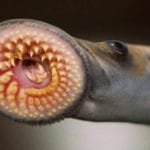 Miscellaneous
Miscellaneous  Miscellaneous
Miscellaneous  Our World
Our World 10 Green Practices That Actually Make a Difference
 Humans
Humans Ten Historic Men Who Deserve Way More Credit Than They Got
 Movies and TV
Movies and TV The 10 Most Heartwarming Moments in Pixar Films
 Travel
Travel Top 10 Religious Architectural Marvels
 Creepy
Creepy 10 Haunted Places in Alabama
 History
History Top 10 Tragic Facts about England’s 9 Days Queen
 Food
Food 10 Weird Foods Inspired by Your Favorite Movies
 Religion
Religion 10 Mind-Blowing Claims and Messages Hidden in the Bible Code
 Facts
Facts 10 Things You Never Knew about the History of Gambling
 Miscellaneous
Miscellaneous Ten Groundbreaking Tattoos with Fascinating Backstories
 Our World
Our World 10 Green Practices That Actually Make a Difference
 Humans
Humans Ten Historic Men Who Deserve Way More Credit Than They Got
Who's Behind Listverse?

Jamie Frater
Head Editor
Jamie founded Listverse due to an insatiable desire to share fascinating, obscure, and bizarre facts. He has been a guest speaker on numerous national radio and television stations and is a five time published author.
More About Us Movies and TV
Movies and TV The 10 Most Heartwarming Moments in Pixar Films
 Travel
Travel Top 10 Religious Architectural Marvels
 Creepy
Creepy 10 Haunted Places in Alabama
 History
History Top 10 Tragic Facts about England’s 9 Days Queen
 Food
Food 10 Weird Foods Inspired by Your Favorite Movies
 Religion
Religion 10 Mind-Blowing Claims and Messages Hidden in the Bible Code
 Facts
Facts 10 Things You Never Knew about the History of Gambling
10 Ways Monkeys Are More Like Us Than We Think
Research into the capabilities of the great apes has shown that, in many ways, our closest ancestors can be remarkably human. While the great ape’s capacity for language is often greatly exaggerated by the media, these animals have still shown some remarkable abilities to understand the basic elements of language. The social similarities between us and the great apes is also a line of research that delivers a steady stream of new discoveries.
What about our more distant relatives—monkeys? Surely, as we follow the trail back to our less-developed cousins, we will find that they share fewer traits with ourselves? This is true, to some degree, but recent discoveries are showing that monkeys are a lot more like us than we ever believed before.
10Monkeys Can Be Taught To Recognize Themselves In Mirrors
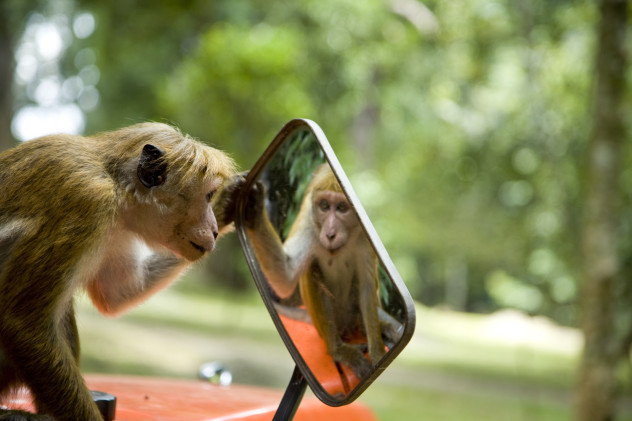
Humans and the great apes have the innate ability to recognize themselves in mirrors—a trait that only a few other animals share. Monkeys are supposed to be incapable of this form of self-recognition.
This began to change in 2015, when researchers at the Chinese Academy of Sciences realized that, while rhesus monkeys might not be seeing themselves at first, they could be taught to recognize themselves. They developed training techniques that included a variation on the standard test for mirror self-recognition (which involves marking a monkey’s face and seeing if they can find it in the mirror).
Holding the monkeys in front of a mirror, the researchers shone a laser light on them. A food reward was given if the monkeys touched the laser points on their own faces by seeing them in the mirror. After two to five weeks, they began to do so regularly.
Their results were published in the journal Cell Biology. The study notes that, even after the experiments were over, most of the monkeys continued to exhibit mirror-induced behavior on their own. The authors believe that the study shows that while monkeys may lack the neurological “software” for self-recognition, they do have the capacity, or “hardware,” to do so inside them.
This “gap” between innate self-recognition and an undeveloped but present capacity for it can teach us a lot about how the neural mechanisms for mirror self-awareness (and consciousness in general) evolved in primates originally, including ourselves.
9Monkeys And Humans Perceive Faces Similarly
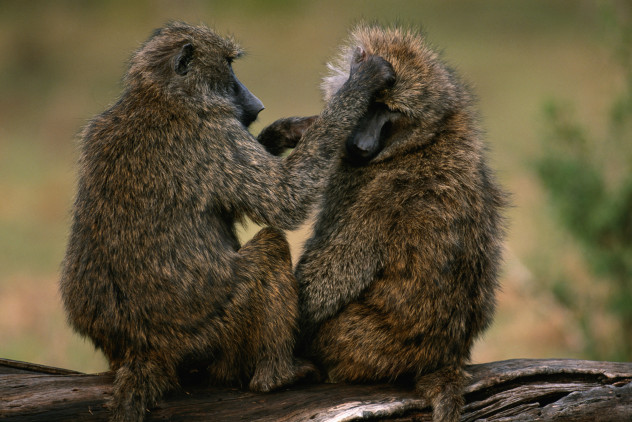
We store an awful lot of information about people—consciously and unconsciously—especially when those faces belong to conspecifics (ranging from immediate family members to fellow churchgoers and so forth).
A 2010 experiment at the Max Planck Institute for Biological Cybernetics in Tubingen, Germany provided evidence that both humans and monkeys use similar physical mechanisms for the task of processing facial information. They used a well-known illusion called the “Thatcher illusion” to aid them.
The Thatcher illusion demonstrates that the brain has a hard time processing the image of a face if it is upside down. You will think that the photo looks alright when, in reality, it has been distorted before being turned around and shown to you.
The scientists in Germany, who published their results in Proceedings B of the Royal Society, had humans and macaque monkeys look at two photos of a face next to each other—one normal, one distorted. Two more of the same photos were placed under those, but these ones were upside down. They were then shown the same layout using the faces of the opposite species.
For the humans looking at themselves, it was obvious which photo was distorted when right-side-up, but the upside-down photos produced the Thatcher illusion as normal. But, when they looked at the photo of the macaques, the Thatcher illusion was present with all sets of photos. The distortions were nearly invisible.
The monkeys were trained and prepared for the task through a period of environmental habituation and then implanted with a headpiece that would track their eye movements. What researchers found was that the monkeys performed exactly the same, easily recognizing the distortions in their own species (but only when right-side-up), but not those in the humans.
Both people and monkeys process faces holistically, and the fact that both species possess a counterpart to the Thatcher illusion, if verified, demonstrates the similar ways both brains evolved to recognize facial features.
8Monkeys May Possess Powers Of Recollection Similar To Our Own
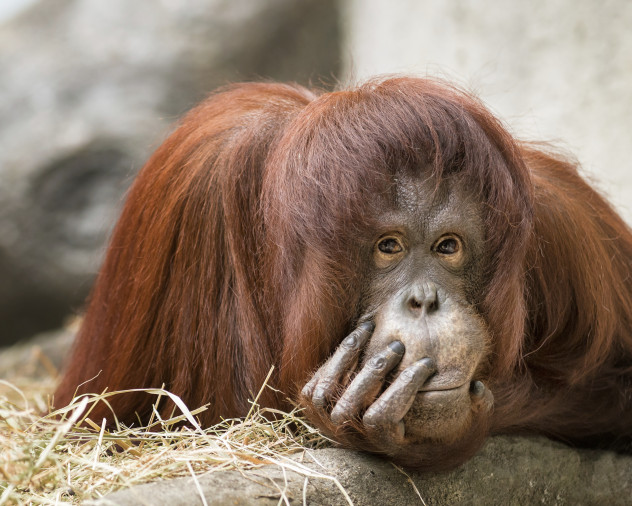
Remembering a childhood memory when a photograph of one is put in front of you is called “recognition.” Being able to draw or describe that memory when no image is present to prompt you is called “recall,” a more sophisticated process. A 2011 study published in Current Biology demonstrated that, like humans, monkeys also possess the capacity for both kinds of memory, and that it works in ways more similar than previously thought.
Study authors Benjamin M. Basile and Robert R. Hampton trained rhesus monkeys to see and reproduce simple shapes on a touch screen computer. They found that recall in humans and primates may have been an adaptive trait before human and rhesus lineages split from a common ancestor, and that monkey recall paralleled that of humans.
The first test to be developed for monkeys for distinguishing between recognition and recall had five rhesus monkeys presented with three boxes drawn on a grid. After a delay, they were shown the grid with only one box marked and the monkeys had to “draw” the remaining boxes by touching the correct coordinates on the grid, completing the image. Like humans, the monkeys had a more difficult time remembering shapes in recall tests than in recognition tests. Also like humans, this recall (once established) deteriorated more slowly over time than recognition. It wasn’t just rote learning either; the monkeys were also able to recall novel shapes that they were not trained with.
7Monkeys May Possess Levels Of Peripheral Perception Similar To Our Own
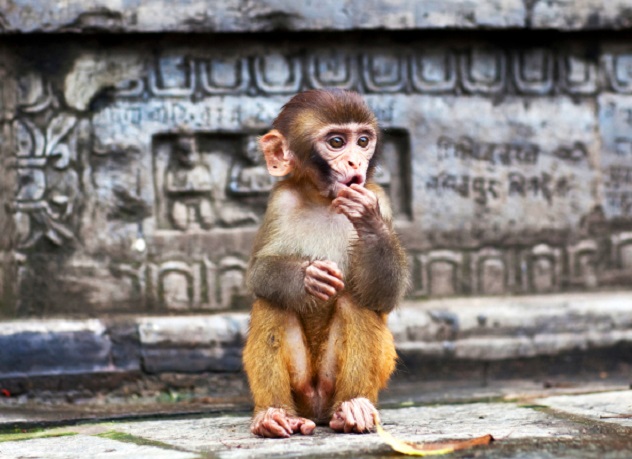
Most humans possess the ability to sometimes perceive and process stimuli before our conscious brains do. This peripheral vision allows us to sidestep obstacles and avoid dangers before we are even aware of them.
A study conducted on five rhesus monkeys was published in 2013 in the journal Animal Cognition and suggests that monkeys also possess peripheral perception.
The monkeys were trained to use a touch screen computer to touch one of four locations briefly shown on-screen. They were then given a second test where they indicated the presence or absence of an object by pressing one of two buttons. Using a method called “visual masking,” the researchers had control over how easily a visible target could be processed.
Sure enough, although accuracy dropped when visual masking was used, the scientists found that even when visually masked, the monkeys could still locate the targets when it was reported that they could not perceive it. This same test is used on humans, and it works exactly the same. This presents evidence that the dissociation of conscious and unconscious (peripheral) vision in monkeys parallels that of humans.
Dr. Lau Andersen was lead author on the study and said, “Knowing whether similar independent brain systems are present in humans and nonverbal species is critical to our understanding of comparative psychology and the evolution of brains.”
6Monkeys May Make Some ‘Irrational’ Choices The Same Way We Do

Human tend to make value decisions based upon approximations. When we have an assortment of different objects in front of us, we approximate an average overall value for those objects. While this is a useful trait, it can get us in trouble. Would you rather have a yummy piece of fruit or a yummy piece of fruit and a bland carrot? Surprisingly, for many people, the former choice is the answer. The perception of lower value in the vegetable makes some people choose incorrectly. This is because our brains evolved to reduce the complexity of certain decision-making processes, and this can produce irrational decisions.
In order to understand why, and to see if monkeys also possess this tendency, Jerald D. Kralik and his colleagues, set up a study published in PLOS One in 2012.
The researchers discovered that rhesus monkeys preferred food of high value over the same food paired with a positive, but lower value, food—just like humans. Under the right conditions, the monkeys will tend to develop these choices into an “affect heuristic,” causing them to make the ongoing irrational choice of preferring less food. According to the study, “Conservation of this affect heuristic could account for similar ‘irrational’ biases in humans, and may reflect a more general complexity reduction strategy in which averages, prototypes, or stereotypes represent a set or group.”
5Monkeys And Humans Can Make Other Decisions In Similar Ways
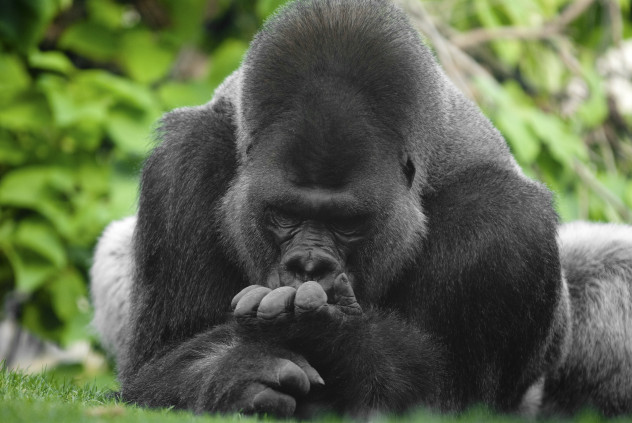
In 2014, researchers at New York University and Stanford University made headway in tracking the underlying processes involved in decision-making and how both humans and monkeys change their minds. By recording many neurons at once, instead of analyzing one neuron at a time, scientists were better able to see the complexities and dynamics of decision-making without the “noise” introduced by earlier methods.
In a study published in Current Biology, lead author Roozbeh Kiani and colleagues worked with macaque monkeys and ran them through a series of tests and monitored neural activity. The tests involved the monkeys viewing randomly moving patches of dots on a screen. The researchers would then send a “go” signal and the monkeys would “report” the direction of the patches via tracked eye movements. The scientists tried to predict what movements the monkeys would make based only on neurological activity just before the “go” signal.
The researchers then used the model to study the dynamics of the monkey’s decisions at various times before the “go” signal was given. They found that decision-making was not always stable, and that covert changes of mind were taking place as the monkeys vacillated from one choice to another. The way the monkeys changed their minds closely matches the way humans perform similar neurological tasks relating to decision-making, as revealed in a 2009 study.
4Monkeys Share Many Of Our Economic Biases
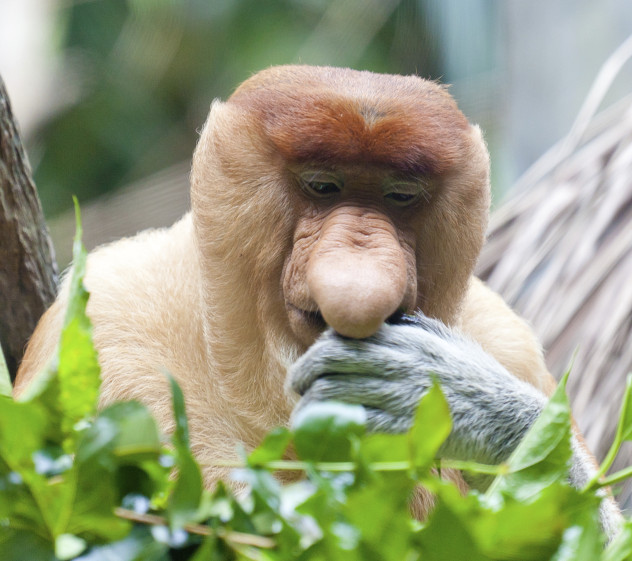
When it comes to brand-name price gouging, do lower primates tolerate that kind of monkey business? Not according to Laurie Santos (a psychologist at Yale University) and Yale undergraduate Rhia Catapano. The two are the lead authors of a December 2014 study on the economic values of monkeys.
It’s been known that the social primates have some comprehension of markets, and that they even share some of the same economic biases. For example, the author’s previous work has shown that monkeys don’t like to lose (loss-averse), are irrational about dealing with risk, and even prone to rationalizing decisions—just like humans.
But there’s one area where our primate cousins are different; they aren’t fooled by brand names and similar ploys. It’s a well-known fact that many people are prone to buy a more expensive item over a less expensive (but essentially identical) item. Wine prices are a well-known example of this.
Seeking to shed some light on the origin of this behavior, the authors and their colleagues took a population of brown capuchin monkeys trained to make use of a token market (tokens were used to purchase food items) and tested to see whether they were likely to use price as an indicator of value. Despite demonstrating an understanding of which goods had which prices and comprehension of value by switching to cheaper items when prices were raised elsewhere, the researchers found no evidence that the monkeys were fooled when prices were manipulated.
It may seem like us humans are dunces about price, but it actually underscores our more sophisticated grasp of the social aspects of markets. We acknowledge high price tags (even though they can lead us astray) because they are a signal that indicates that our social peers like the items. Monkeys lack this social element to these markets.
3Oxytocin Influences Social Skills And Bonding
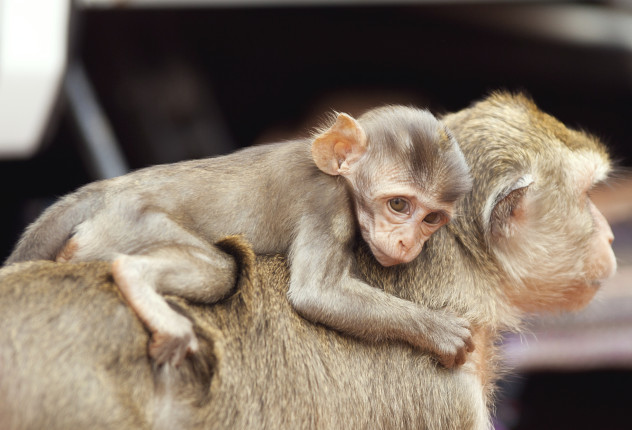
Oxytocin is a hormone produced in the human pituitary gland that plays a role in development from birth, where it is involved in labor and the production of breast milk. Studies have shown that it plays a role in parental bonding, social dynamics, and even mating. Because of its role in social development, researchers have long been interested in its potential as a medicine. Until recently, oxytocin did not seem to play this role for the lower primates.
Now, researchers at the National Institutes of Health, the University of Parma in Italy, and the University of Massachusetts Amherst have begun to change that notion with new evidence that oxytocin does indeed increase the social behavior of newborn macaque monkeys. Their study was published in the Proceedings of the National Academy of Sciences of the United States of America in 2014.
By giving infant monkeys inhaled doses of oxytocin, researchers observed increased amounts of positive social behaviors, such as increased communicative gestures with the mother, and greater social interest. If validated, this research could prove that oxytocin could be a powerful way to provide early interventional treatment for human children who are at risk of abnormal social functions and developmental disorders.
2Regions Of Our Brains Once Thought To Be Unique Share Many Similarities With Monkeys
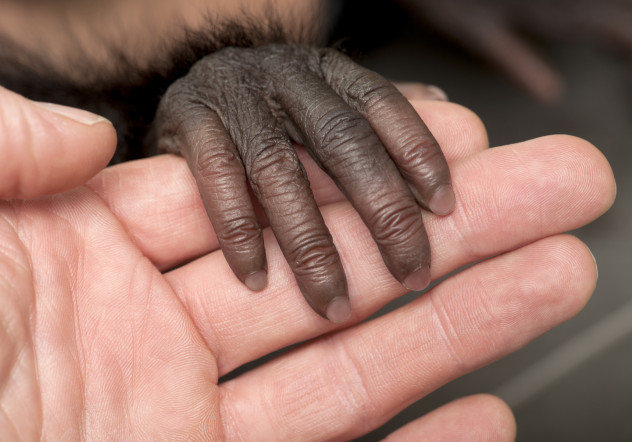
The January 2014 edition of the Cell Press journal, Neuron, published an article that revealed that structures within both human and monkey brains are more similar than previously thought.
Specifically, researchers were interested in the regions of the ventrolateral frontal cortex, responsible for such things as controlling language and complex thought processes in both species. Some scientists had previously argued that, in order to develop such processes, humans had to develop an entirely novel set of neural apparatuses, but others believed that evolutionary precursors could be found among the lower primates.
Lead author Franz-Xaver Neubert and colleagues used MRI techniques in a group of 25 people and 25 macaque monkeys in order to compare the neural connections and brain architecture of both groups. While they found striking differences, the researchers were also surprised to find many similarities as well (they found 11 ventrolateral frontal cortex components that interacted in similar ways and with a similar distribution of brain circuits, for example).
The differences could help explain why monkeys fare worse (or just differently) at performing auditory tasks and in areas such as strategic planning, multitasking, and decision-making, while the similarities may provide evidence that many human neural abilities evolved from evolutionarily conserved neural apparatuses and that later changes to those connections brought about different functions.
1Monkey ‘Language’ Is More Sophisticated Than Previously Thought
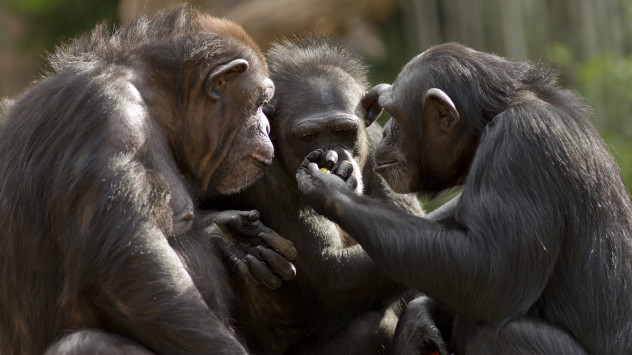
Scientists are beginning to understand that language usage by monkeys is much more sophisticated than previously thought, and that some monkeys of the same species even have different “dialects” across geographical areas, much as humans do.
Philippe Schlenker (Senior Researcher at Institut Jean-Nicod within France’s National Center for Scientific Research (CNRS) and a Global Distinguished Professor at New York University), says that, “Our findings show that Campbell’s monkeys have a distinction between roots and suffixes, and that their combination allows the monkeys to describe both the nature of a threat and its degree of danger.”
In a paper published in 2014, a team of linguists and primatologists studied the alarm calls of Campbell’s monkeys and determined that the monkeys had two basic words: “krak” for leopard and “hok” for eagle. They also have a series of modulating sounds, such as “-oo” (which generalizes the danger or indicates that it is not visible) and “boom boom,” which indicates that the call is not about predation and can mean “come here” or “over here.” The scientists claim that they have found six distinct calls in all, which can be mixed to provide a different meaning. For example, “boom boom krak-oo krak-oo krak-oo,” means “watch out for falling trees,” and the monkey equivalent of “watch out for the eagle” would be “hok hok hok!”
The first time scientists worked out the meaning of monkey vocalizations was with velvet monkeys, who had three distinct calls for predators, but showed no evidence whatsoever of being able to manipulate the meaning of their words.
The researchers worked with two groups of monkeys from the Tai forest and Tiwai island. They found that the calls had different or modified meanings across regions. The authors argue that this is the result of a form of linguistic “competition” they base around a well-known human phenomena called “implicatures,” (a word can change meaning when it competes with a more informative alternative word).
Lance LeClaire is a freelance artist and writer. He writes on subjects ranging from science and skepticism, atheism, and religious history and issues, to unexplained mysteries and historical oddities, among other subjects. You can look him up on Facebook, check out his satirical atheist blog, or keep an eye for his articles on Listverse.
